Mario Alberto Duran-Vega
TYolov5: A Temporal Yolov5 Detector Based on Quasi-Recurrent Neural Networks for Real-Time Handgun Detection in Video
Nov 19, 2021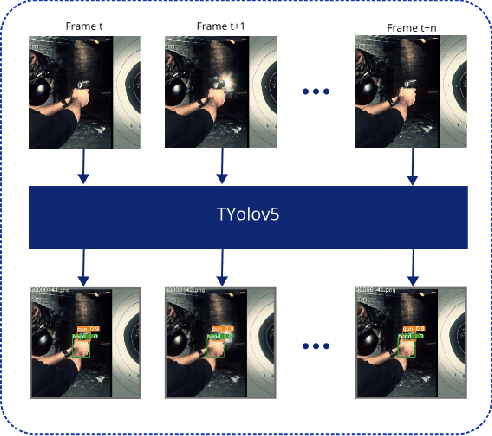
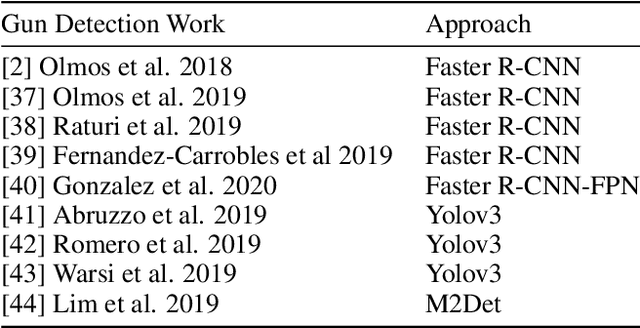
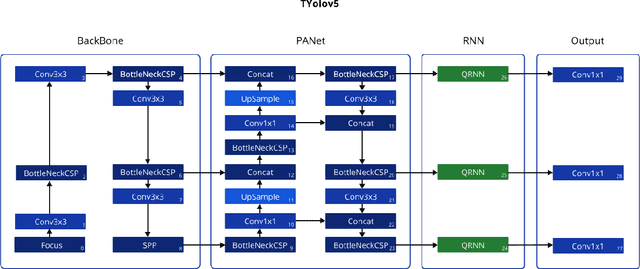

Abstract:Timely handgun detection is a crucial problem to improve public safety; nevertheless, the effectiveness of many surveillance systems still depends of finite human attention. Much of the previous research on handgun detection is based on static image detectors, leaving aside valuable temporal information that could be used to improve object detection in videos. To improve the performance of surveillance systems, a real-time temporal handgun detection system should be built. Using Temporal Yolov5, an architecture based on Quasi-Recurrent Neural Networks, temporal information is extracted from video to improve the results of handgun detection. Moreover, two publicly available datasets are proposed, labeled with hands, guns, and phones. One containing 2199 static images to train static detectors, and another with 5960 frames of videos to train temporal modules. Additionally, we explore two temporal data augmentation techniques based on Mosaic and Mixup. The resulting systems are three temporal architectures: one focused in reducing inference with a mAP$_{50:95}$ of 55.9, another in having a good balance between inference and accuracy with a mAP$_{50:95}$ of 59, and a last one specialized in accuracy with a mAP$_{50:95}$ of 60.2. Temporal Yolov5 achieves real-time detection in the small and medium architectures. Moreover, it takes advantage of temporal features contained in videos to perform better than Yolov5 in our temporal dataset, making TYolov5 suitable for real-world applications. The source code is publicly available at https://github.com/MarioDuran/TYolov5.
A Bop and Beyond: A Second Order Optimizer for Binarized Neural Networks
Apr 11, 2021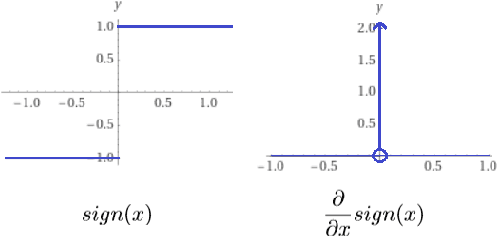
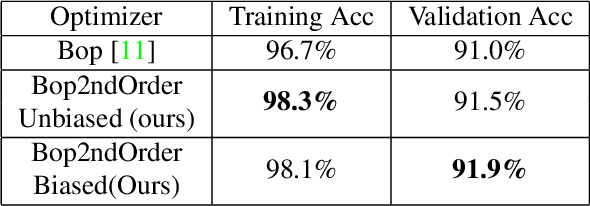
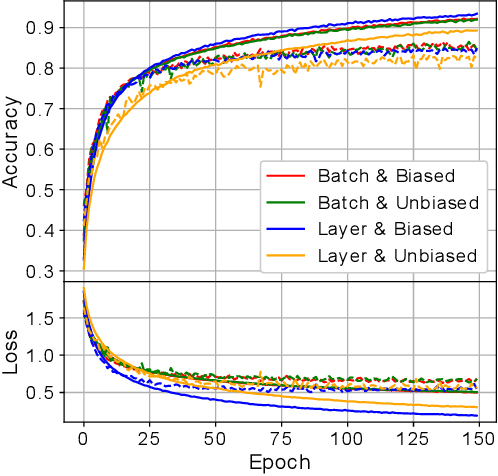
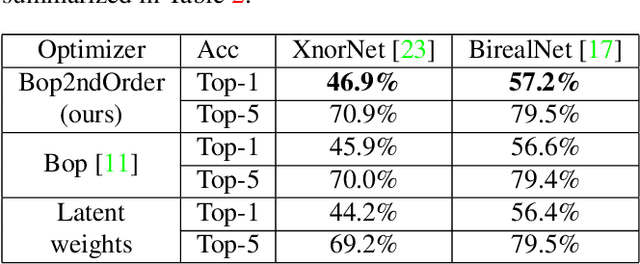
Abstract:The optimization of Binary Neural Networks (BNNs) relies on approximating the real-valued weights with their binarized representations. Current techniques for weight-updating use the same approaches as traditional Neural Networks (NNs) with the extra requirement of using an approximation to the derivative of the sign function - as it is the Dirac-Delta function - for back-propagation; thus, efforts are focused adapting full-precision techniques to work on BNNs. In the literature, only one previous effort has tackled the problem of directly training the BNNs with bit-flips by using the first raw moment estimate of the gradients and comparing it against a threshold for deciding when to flip a weight (Bop). In this paper, we take an approach parallel to Adam which also uses the second raw moment estimate to normalize the first raw moment before doing the comparison with the threshold, we call this method Bop2ndOrder. We present two versions of the proposed optimizer: a biased one and a bias-corrected one, each with its own applications. Also, we present a complete ablation study of the hyperparameters space, as well as the effect of using schedulers on each of them. For these studies, we tested the optimizer in CIFAR10 using the BinaryNet architecture. Also, we tested it in ImageNet 2012 with the XnorNet and BiRealNet architectures for accuracy. In both datasets our approach proved to converge faster, was robust to changes of the hyperparameters, and achieved better accuracy values.
 Add to Chrome
Add to Chrome Add to Firefox
Add to Firefox Add to Edge
Add to Edge